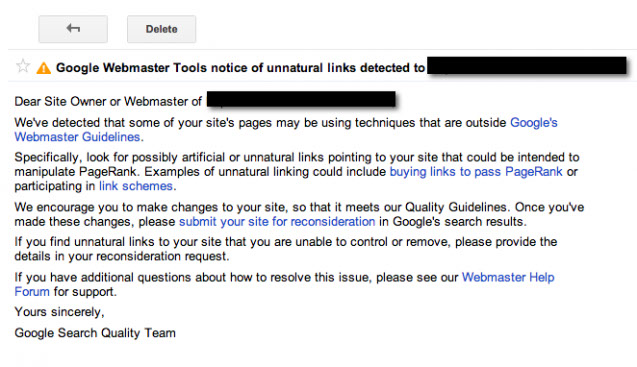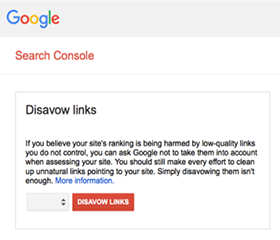Backlinks are an important SEO tool to improve rankings and visibility online, and having a good number of quality backlinks on your website is a sign to search engines that yours is a high-quality site. However, backlinks don’t always come from trustworthy sources, and when this happens it can lead to penalisation by search engines.
Over time, more and more people have started buying links in order to achieve better rankings and visibility. This has led to the widespread buying of low-quality links, which pushed Google to introduce the Penguin algorithm to identify any bad backlinks it comes across.
How Google penalises low-quality links
1. Personalised approach – manual penalty
A member of the Google team assesses your link profile and applies a manual penalty, which can include competitors’ spam reports and link profiles. You normally receive a notification when a penalty has been applied to your website.
2. Algorithmic link spam penalty
This type of penalty is carried out by Google’s Penguin filter. You will see a sharp decline in your organic traffic, which will be strongly affected.
How to spot bad links
Unfortunately, there is no set method to know which links will be penalised by Google. The best method is to spot bad links and remove them manually. Some of the things to look out for are inconsistent directories, links to spammy websites (especially in blog comments), and any links to irrelevant sites or low-quality content.
A quality rating assessment of your links will help you to identify bad links, and attributing a quality score to your links and splitting them into groups will make this process easier. This, however, should be an ongoing and regular activity.
Removing bad links
There are various ways to get rid of your bad links:
1. Wait it out
If the bad links aren’t your fault, Google will remove them once webmasters become aware of the problem.
2. Cut them off
If you don’t have much time, you should simply remove the bad links. However, if you do not have control over the sites, contacting the webmasters is your best bet.
3. Remove the pages in question
If the bad links are positioned on deep pages, you can remove those pages and return a 404 error.
4. Introduce more quality links
By adding more links of high quality and authority to your website, you will gradually degrade the bad backlinks. Collating good quality links, however, takes time, so this may not be the best option.
If, after following all the steps above, you are still getting penalised by Google, you might want to appeal for reconsideration. Google also has its own link disavowal tool, which lets you report links you would like to disavow.
Ultimately, a good website audit will reveal any suspicious links, and doing this regularly will ensure that you limit your chances of getting penalised.
Bad backlinks on Yandex
The Russian search engine Yandex also condemns link buying practices and its machine-learning algorithm for ranking pages attributes negative scores to websites which do this. When it comes to links, Yandex doesn’t just punish sellers, but buyers too. The tips we listed above for getting rid of bad backlinks will also work with Yandex.
Yandex has no plans to introduce a link disavowal tool, and removing bad links manually is your best bet. Paying attention to your backlinks and ensuring they are of the very highest quality will help you avoid any penalisation from search engines.











